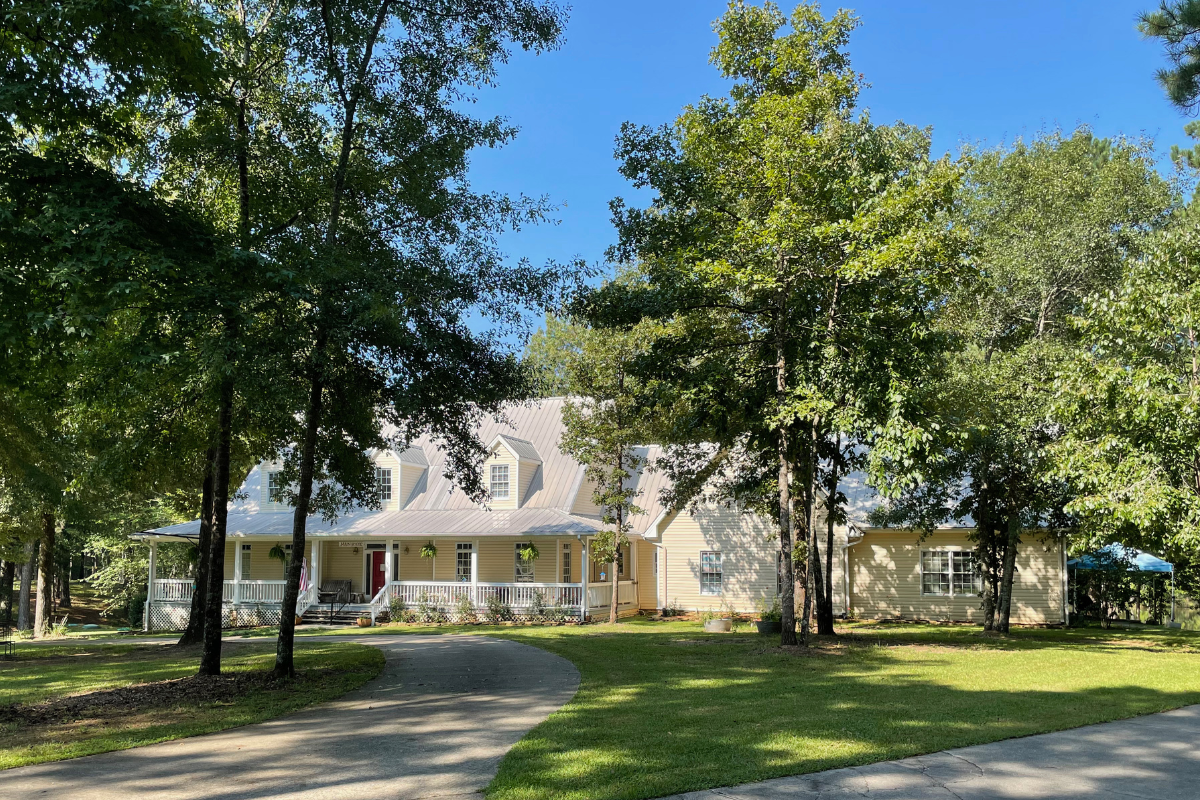Imagine a young woman who has lost more than 20% of her body weight in just a few months. She’s dizzy most of the day, her heart rate is dangerously low, she hasn’t had a period in months, and she can barely focus at work. She lives by rigid food rules and skips dinner with friends because she’s terrified someone will notice what—or how little—she eats. She drags herself through brutal workouts even when she’s exhausted or sick.
Every one of these symptoms is a hallmark of an eating disorder, specifically anorexia nervosa. They scream psychiatric and medical emergency. But when this young woman finally sees a doctor, her BMI falls into the “slightly above average” range, and suddenly everything changes. Her dangerous weight loss gets reframed as “progress.” Her disordered behaviors get praised as “discipline.” Her suffering gets dismissed as the predictable cost of getting “healthier.”
Let’s be blunt: we have decided, collectively and often unconsciously, that eating disorders only count when they happen to thin people. We have internalized the belief that restriction, over-exercise, and food obsession are problems in underweight bodies but virtues in larger ones. And that bias—that fundamental failure to see suffering when it doesn’t fit our narrow visual script—is creating an environment where dangerous mental health disorders can thrive.
What is Atypical Anorexia?
According to the Diagnostic and Statistical Manual of Mental Disorders, Fifth Edition (DSM-5), atypical anorexia falls under the category of Other Specified Feeding or Eating Disorders (OSFED). This disorder includes all the clinical features of anorexia nervosa — except for the low body weight requirement.
In other words, someone with atypical anorexia:
- Severely restricts food intake, leading to significant weight loss
Has an intense fear of gaining weight or becoming fat
Possesses a distorted view of their body shape and/or weight
The key difference: Their weight remains within or above the “normal” range, despite these severe behaviors (APA, 2013).
In atypical anorexia, an individual may lose a dangerous amount of weight, show signs of severe malnutrition, and develop life-threatening medical complications — yet still not meet the “low weight” threshold required for a formal anorexia nervosa diagnosis.
Atypical Anorexia Symptoms: Physical, Emotional, + Behavioral Signs
Atypical anorexia presents with nearly all the same symptoms as classic anorexia nervosa. The physical, psychological, and behavioral signs can be just as dangerous, even in bodies that don’t appear underweight.
DSM-5 Diagnostic Criteria (APA, 2013)
1. Restriction of energy intake
relative to requirements, leading to significant weight loss (but not necessarily underweight status).
2. Intense fear of gaining weight or becoming fat
or persistent behavior that interferes with weight gain.
3. Distorted body image
or inability to recognize the seriousness of current weight loss.
While diagnostic criteria provide a clinical foundation, the lived reality of atypical anorexia often reveals itself through a range of both visible symptoms and hidden struggles — many of which go unrecognized without a closer look.
Signs + Symptoms of Atypical Anorexia
Psychological
Emotional
Behavioral
Physical
Distorted body image — seeing oneself as larger despite weight loss
Intense fear or dread around food and eating
Skipping meals or eating far less than the body needs
Fatigue + low energy
Obsessive preoccupation with food, calories, and weight
Persistent shame or guilt after eating
Eliminating entire food groups without medical reason
Feeling cold most of the time
Rigid, perfectionistic thinking around body shape or eating
Chronic anxiety, especially in food-related situations
Excessive or compulsive exercise
Dizziness or fainting spells
All-or-nothing thinking (“good” vs. “bad” foods)
Depressed mood or hopelessness
Rigid food rituals — cutting food into tiny pieces, eating in specific order
Menstrual irregularities or amenorrhea
Denial or minimization of illness (“I’m not sick enough”)
Irritability and mood swings
Avoiding eating with others or in public
Dry skin, brittle nails, hair loss
Persistent fear of weight gain despite medical stability
Isolation and withdrawal from social life
Using exercise to “earn” or “burn off” food
Gastrointestinal issues (constipation, bloating)
Internalized weight stigma and belief that “thinner is better”
Loss of joy or emotional numbness
Reliance on nutritional supplements or shakes instead of solid meals
Cardiovascular changes (low heart rate, low blood pressure)
Cognitive impairment from malnutrition — difficulty concentrating, poor memory
Heightened self-criticism and inability to practice self-compassion
Avoiding “fear foods” entirely
Weakened immune system, frequent illness, muscle and bone loss, and electrolyte imbalances
Psychological
Distorted body image—seeing oneself as larger despite weight loss
Obsessive preoccupation with food, calories, and weight
Rigid, perfectionistic thinking around body shape or eating
All-or-nothing thinking (“good” vs. “bad” foods)
Denial or minimization of illness (“I’m not sick enough”)
Persistent fear of weight gain despite medical stability
Internalized weight stigma and belief that “thinner is better”
Cognitive impairment from malnutrition—difficulty concentrating, poor memory
Emotional
Intense fear or dread around food and eating
Persistent shame or guilt after eating
Chronic anxiety, especially in food-related situations
Depressed mood or hopelessness
Irritability and mood swings
Isolation and withdrawal from social life
Loss of joy or emotional numbness
Heightened self-criticism and inability to practice self-compassion
Behavioral
Skipping meals or eating far less than the body needs
Eliminating entire food groups without medical reason
Excessive or compulsive exercise
Rigid food rituals—cutting food into tiny pieces, eating in specific order
Avoiding eating with others or in public
Using exercise to “earn” or “burn off” food
Reliance on nutritional supplements or shakes instead of solid meals
Avoiding “fear foods” entirely
Physical
Fatigue + low energy
Feeling cold most of the time
Dizziness or fainting spells
Menstrual irregularities or amenorrhea
Dry skin, brittle nails, hair loss
Gastrointestinal issues (constipation, bloating)
Cardiovascular changes (low heart rate, low blood pressure)
Weakened immune system, frequent illness, muscle and bone loss, and electrolyte imbalances
The Physical Toll
The human body’s response to starvation, restriction, and malnutrition is not dependent on body weight. Individuals with atypical anorexia can experience:
The same metabolic slowdown that occurs in typical anorexia nervosa.
The same cardiovascular dangers, such as arrhythmias (irregular heartbeat) or sudden cardiac arrest.
The same suppression of hormones, leading to bone loss and reproductive health problems.
The same compromised immune system, increasing vulnerability to illness.
Research confirms that individuals with atypical anorexia can be just as medically unstable as those with classic anorexia — and sometimes more so, especially if weight loss is rapid (Sawyer et al., 2016).
Relying on weight alone to judge the severity of an eating disorder is dangerously misleading. Individuals with atypical anorexia may face serious medical instability, organ strain, and life-threatening complications — even when their bodies appear “normal” or “healthy” from the outside.
The Behavioral Toll
Weight doesn’t tell the full story. A person may appear “normal” on the outside while struggling with extreme behaviors like meal skipping, over-exercising, or restricting entire food groups. These behaviors:
- Signal disordered eating well before dramatic weight loss occurs
Can result in severe nutrient deficiencies
Often fly under the radar due to cultural praise for weight loss or “healthy eating”
The Emotional Toll
The emotional impact of atypical anorexia can be profound, even when the physical symptoms aren’t immediately recognized. Because the eating disorder isn’t always taken seriously due to body size, individuals often suffer in silence — battling intense emotional distress on their own.
Emotional symptoms of atypical anorexia may include:
- Persistent shame or guilt after eating
Intense anxiety or dread in food-related situations
Chronic irritability or mood swings
Hopelessness, emotional numbness, or depression
Social withdrawal or isolation due to fear of judgment
Feelings of unworthiness or believing they’re “not sick enough” to deserve help
These symptoms can interfere with daily life, strain relationships, and reinforce the eating disorder — especially when the individual feels invalidated or overlooked by others.
Some studies suggest individuals with atypical anorexia may suffer even more emotionally than those with typical anorexia — largely because they receive less validation or access to care (Sawyer et al., 2016).
The Psychological Toll
Atypical anorexia may not involve low body weight, but the mental toll is just as intense — and often just as dangerous. The core thought patterns mirror those of classic anorexia nervosa: an unrelenting focus on weight, food, and body size that fuels harmful behaviors and deepens psychological distress.
In both atypical and typical anorexia nervosa, key psychological patterns may include:
Rigid, intrusive thought patterns surrounding food, weight, and control
Persistent anxiety that intensifies disordered behaviors
Harsh, unrelenting self-criticism and perfectionism
Heightened risk of depression, self-harm, and isolation
In other words, while the scale might read differently, the cognitive patterns are identical, and without intervention, they can be just as life-threatening — both through medical complications from ongoing restriction and through the severe toll on mental health.
THE BOTTOM LINE: Significant weight loss, fear of gaining weight, and obsessive food behaviors are red flags — no matter the number on the scale. Early recognition can save lives, and is the first step toward recovery.
Contextual Clues + Overlooked Signs
Because weight loss is so often praised in our culture — especially in individuals with “average” or higher-weight bodies — the early signs of atypical anorexia are frequently overlooked or even celebrated. Friends, family, and even healthcare providers may compliment someone’s “discipline” or “healthy lifestyle,” not realizing the weight loss stems from dangerous restriction and a serious eating disorder.
Consistent pattern of denying hunger
One of the more subtle but telling warning signs of atypical anorexia is a consistent pattern of denying hunger. Phrases like “I just ate” or “I’m not hungry” may seem harmless on the surface — but when repeated, especially alongside restrictive behaviors, they often signal something deeper. Over time, this pattern can mask serious disordered eating and delay necessary support.
This pattern often serves multiple functions within the eating disorder, reinforcing disordered behaviors and shielding them from outside concern:
Masking restriction – Deflects concern from loved ones, allowing restriction to continue unnoticed.
Avoiding food-related conflict – Helps sidestep pressure to eat or explain food choices.
Disconnecting from hunger cues – Over time, chronic restriction — a biological adaptation to starvation — can dull natural hunger signals, reinforcing the belief that eating isn’t necessary.
Protecting the disorder – Maintains a sense of control and shields disordered behaviors from intervention.
Progressive food avoidance
A common but often overlooked sign of atypical anorexia is a gradual narrowing of the foods a person is willing to eat. This often begins with seemingly harmless changes — cutting out desserts, fried foods, or processed snacks “for health.” Over time, however, the list of “acceptable” foods shrinks further, and entire categories like bread, pasta, dairy, or fats may be eliminated.
Because this restriction can occur in individuals whose weight is still considered “normal” or above average, it often goes unnoticed. But a progressively limited diet can lead to:
- Serious nutrient deficiencies
Medical complications
Increased emotional and psychological distress
Recognizing this shift early is crucial. The longer these patterns continue, the more entrenched and dangerous they become.
Unusual food rituals
In many individuals with this disorder, food is often managed through a set of rigid, repetitive rituals that can make eating feel controlled, predictable, and emotionally “safe.” These behaviors may seem inconsequential at first, but over time they can signal an unhealthy and obsessive relationship with food and eating.
Examples may include:
Cutting food into tiny, uniform pieces.
Eating foods in a specific order or one item at a time.
Measuring or weighing every portion with extreme precision.
Only using certain plates, utensils, or cups for meals.
Rearranging food on the plate instead of eating it.
In the context of atypical anorexia, these behaviors often serve a deeper purpose: to slow eating, reduce food intake, or avoid feelings of guilt and anxiety. The rituals can become so entrenched that breaking them causes significant distress, even if the changes are small.
"Health-framed" restrictive eating
One of the more deceptive signs of atypical anorexia is restriction disguised as “healthy choices”. Instead of expressing fear of weight gain, an individual may rationalize their behaviors with seemingly positive intentions — framing rigid rules and avoidance as lifestyle choices.
Common justifications include:
“I’m just cutting carbs because they’re bad for you.”
“I’m trying to eat super clean — no sugar, no processed foods, no dairy.”
“I’m fasting to give my digestion a break.”
“I’m avoiding fat because it’s healthier for my heart.”
While these statements may sound reasonable, they often conceal deeper anxieties about food, control, and body image. Understanding that health-framed restriction can still be disordered eating is crucial. When food rules are driven by fear — not genuine wellness — they reinforce the eating disorder, not recovery.
Social changes around food
One of the quieter but more telling signs of atypical anorexia is a shift in how someone interacts with food in social settings. Since meals are often central to family gatherings, holidays, and everyday social events, these changes can stand out — though they’re not always recognized for what they are.
Common patterns include:
Consistently turning down invitations involving food
Arriving late or leaving early to avoid shared meals
Claiming to have “already eaten”
Preparing food for others but avoiding it themselves
Bringing “safe” foods or refusing to eat in front of others
While these behaviors may be misinterpreted as personal preference or “healthy boundaries,” they often reflect deep discomfort, anxiety, or fear related to eating. Left unaddressed, these patterns can lead to isolation—and allow the eating disorder to further tighten its grip.
Healing from Atypical Anorexia
Compassionate Treatment at Magnolia Creek
- Nutrition therapy and counseling
Individual and group psychotherapy
Family involvement
Experiential and mindfulness-based therapies
Start Your Healing Journey Today
References
American Psychiatric Association. (2013). DSM-5 Diagnostic Criteria for Feeding and Eating Disorders.
Lebow, J., et al. (2015). Prevalence of Atypical Anorexia Nervosa in Adolescents. International Journal of Eating Disorders, 48(8).
Sawyer, S.M., et al. (2016). Physical and Psychological Morbidity in Adolescents with Atypical Anorexia Nervosa. Pediatrics, 137(4).
Whitelaw, M., et al. (2014). Medical Complications Across the Weight Spectrum in Adolescents with Restrictive Eating Disorders. Journal of Adolescent Health, 55(3).














































